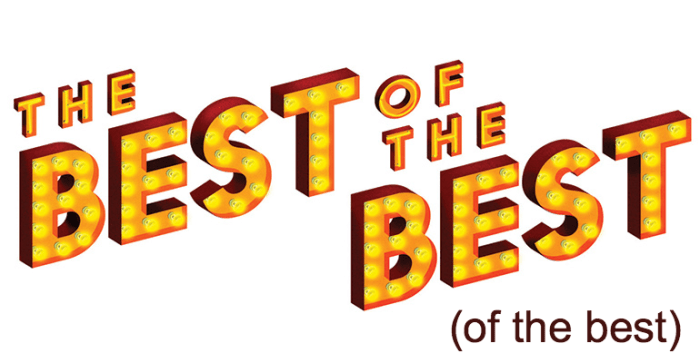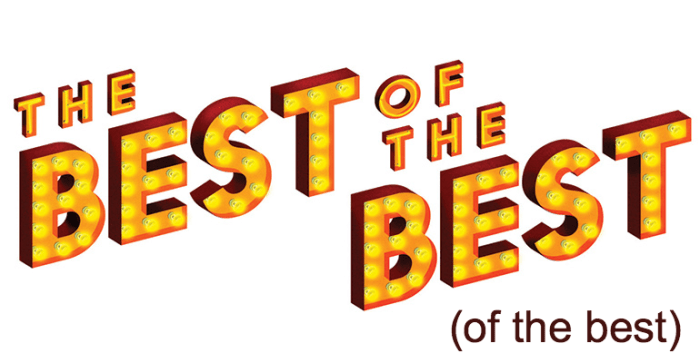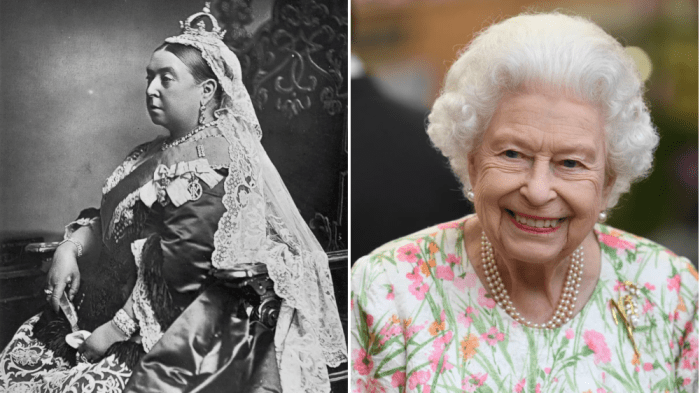Best neighborhoods in Hong Kong – a fascinating exploration of the vibrant tapestry of districts, from bustling commercial hubs to serene residential havens. This guide dives deep into the diverse neighborhoods, highlighting their unique characteristics and historical context. We’ll analyze the factors that influence neighborhood choices, from proximity to amenities to lifestyle preferences. Get ready to uncover the gems that make Hong Kong such a captivating city!
This in-depth look at Hong Kong’s best neighborhoods considers everything from the cost of living and housing to the quality of life, including safety, green spaces, and public transport. We’ll also delve into the vibrant commercial districts, the must-see tourist spots, and the diverse dining scene that each area offers.
Introduction to Hong Kong Neighborhoods

Hong Kong, a vibrant metropolis, boasts a diverse tapestry of neighborhoods, each with its own unique character and history. From bustling commercial districts to serene residential enclaves, the city’s neighborhoods reflect a fascinating blend of tradition and modernity, shaped by its colonial past and its rapid economic growth. Understanding the historical context and key factors influencing neighborhood choices helps appreciate the unique charm of each area.Hong Kong’s development has been profoundly influenced by its geography and historical trajectory.
Early settlements were concentrated along the coast and in areas with readily accessible resources. The subsequent influx of immigrants and the rise of industries further shaped the character of different districts. Today, the city’s neighborhoods cater to a wide range of lifestyles, from young professionals seeking urban convenience to families seeking quiet residential areas.
Historical Context of Neighborhood Development
Hong Kong’s earliest settlements were centered around fishing villages and trading ports. The arrival of the British in the 19th century ushered in a period of rapid development, with the construction of infrastructure and the establishment of commercial hubs. The subsequent periods of Japanese occupation and post-war reconstruction further impacted the city’s layout and the emergence of specific neighborhoods.
These historical events left indelible marks on the architectural styles, cultural nuances, and social dynamics within different districts.
Key Factors Influencing Neighborhood Choices
Several factors play a significant role in shaping residents’ choices of neighborhoods in Hong Kong. Proximity to employment opportunities, schools, and public transportation is often a crucial consideration. Lifestyle preferences, such as the desire for a vibrant nightlife, a peaceful residential setting, or easy access to recreational activities, also influence neighborhood selection. The cost of living, including housing prices and rental rates, is another key determinant.
Ultimately, the perfect neighborhood balances these factors to suit individual preferences and needs.
Categorization of Hong Kong Neighborhoods
Understanding the diversity of Hong Kong’s neighborhoods requires categorizing them based on their primary function. This classification provides a framework for comprehending the unique characteristics of different areas.
| Category | Description | Examples | Key Features |
|---|---|---|---|
| Residential | Areas primarily focused on housing and family life. | Mid-Levels, Sheung Shui, Tai Hang | Often characterized by quieter streets, well-established schools, and a focus on family-friendly amenities. |
| Commercial | Districts centered around business, trade, and financial activities. | Central, Admiralty, Wan Chai | Known for high-rise buildings, offices, financial institutions, and a vibrant business atmosphere. |
| Tourist | Areas designed to attract tourists and provide visitor-centric experiences. | Central, Tsim Sha Tsui, Causeway Bay | Typically feature prominent landmarks, shopping malls, restaurants, and entertainment venues. |
| Mixed-Use | Areas combining residential, commercial, and tourist elements. | Causeway Bay, Mong Kok | Offer a blend of residential living, shopping, dining, and entertainment, catering to diverse needs. |
Residential Neighborhoods
Hong Kong’s residential neighborhoods offer a diverse range of experiences, catering to various lifestyles and preferences. From bustling urban enclaves to tranquil suburban retreats, each neighborhood boasts unique characteristics and appeals to different demographics. Understanding these distinctions is crucial for choosing the right place to call home.The selection of Hong Kong’s top residential areas is subjective and often influenced by individual priorities.
Factors such as proximity to work, schools, amenities, and overall lifestyle preferences play a significant role in the appeal of a specific neighborhood. This section explores some of the most desirable residential areas, highlighting their popularity, comparing lifestyles, and outlining the housing options available.
Top 5 Most Desirable Residential Neighborhoods
Hong Kong’s vibrant cityscape offers a variety of residential neighborhoods, each with its own unique character. These five neighborhoods consistently rank high in desirability, attracting a wide range of residents.
Hong Kong’s got some amazing neighborhoods, from the bustling energy of Central to the tranquil charm of Sheung Wan. But if you’re craving something a little different, consider the thrill of a cycling safari in Botswana and Tanzania. Check out this incredible experience exploring the Wagora bike ride with Singita, a truly unforgettable adventure cycling safari botswana tanzania wagora bike ride singita explore.
After that epic ride, you’ll be ready to appreciate the local vibes and trendy cafes in Hong Kong’s best neighborhoods even more!
- Mid-Levels: Known for its exclusive atmosphere, stunning views, and proximity to high-end shopping and dining, the Mid-Levels stands out for its upscale living. The area’s traditional architecture, coupled with modern amenities, creates a unique charm for residents seeking luxury and convenience. The high property values reflect the area’s desirability and exclusivity.
- Causeway Bay: A bustling commercial hub, Causeway Bay also boasts a variety of residential options, especially for young professionals and those seeking easy access to work and entertainment. The neighborhood’s vibrant atmosphere and convenient location make it attractive to those who prefer a lively environment. While it’s not as exclusive as Mid-Levels, the easy access to amenities and public transportation makes it a desirable option.
- The Peak: Nestled atop Victoria Peak, this neighborhood is renowned for its panoramic views of the city. The luxurious residences and tranquil atmosphere attract those seeking a sophisticated lifestyle. The limited number of residences and the exclusivity of the location make it a coveted choice for those who prioritize privacy and breathtaking views.
- Sai Kung: A tranquil retreat on the outskirts of Hong Kong Island, Sai Kung is a popular choice for families seeking a more relaxed pace of life. The area’s beautiful natural scenery and proximity to hiking trails and beaches make it ideal for those who value outdoor recreation. The more affordable housing options compared to central districts are also attractive to many.
- Stanley: A charming coastal neighborhood with a relaxed atmosphere, Stanley attracts those seeking a blend of urban convenience and seaside tranquility. Its historic charm and proximity to the harbor make it an appealing option for those who appreciate a more laid-back lifestyle. The area’s unique character, with its cobbled streets and local shops, creates a distinct atmosphere for residents.
Lifestyle Experiences in Different Residential Areas
The lifestyle experiences in different residential areas reflect the unique characteristics of each neighborhood.
- Family-Friendly: Neighborhoods like Sai Kung and some areas in the New Territories offer a more family-oriented environment with good schools, parks, and a more relaxed pace of life. The availability of larger housing options and quieter streets contributes to the family-friendly appeal.
- Young Professionals: Causeway Bay and areas near business districts offer a vibrant and convenient lifestyle, with easy access to work, shopping, and entertainment. The presence of a wide range of restaurants, bars, and social activities makes it a popular choice for young professionals.
- Luxury and High-End: Mid-Levels and The Peak are known for their high-end residences, exclusive amenities, and stunning views. These neighborhoods cater to those seeking a sophisticated and luxurious lifestyle.
Housing Options and Types
The types of housing options vary across Hong Kong’s residential neighborhoods.
- Apartments: Apartments are the most common housing type, available in various sizes and configurations across most neighborhoods. They offer a balance of space and convenience.
- Villas: Larger, standalone houses, often with gardens, are more prevalent in areas like Sai Kung and certain parts of the New Territories. They offer more privacy and space, though often at a higher cost.
- Townhouses: A blend of independent living and communal living, townhouses are found in certain neighborhoods, providing a mix of privacy and community features.
Comparative Analysis of Housing Costs
The following table provides a comparison of average housing costs, sizes, and amenities in three specific Hong Kong neighborhoods.
Hong Kong’s got some amazing neighborhoods, from the bustling energy of Central to the tranquil charm of Sheung Wan. But if you’re planning a trip there, be sure to check out the best neighborhoods before you go. While you’re researching, consider the recent Park City ski patrol strike and the resulting long lines at the slopes. For more info on the situation, check out this helpful article: park city ski patrol strike long lines what to know.
Knowing about potential disruptions can help you plan your Hong Kong itinerary accordingly, ensuring a smoother trip.
| Neighborhood | Average Housing Cost (HK$) | Average Size (sq ft) | Key Amenities |
|---|---|---|---|
| Mid-Levels | > 20,000,000 | 1,000-2,000 | Luxury finishes, stunning views, concierge service, proximity to high-end shops and restaurants |
| Causeway Bay | 5,000,000-10,000,000 | 500-1,000 | Proximity to shopping malls, restaurants, and public transportation, diverse range of shops and restaurants |
| Sai Kung | 3,000,000-6,000,000 | 800-1,500 | Natural scenery, proximity to hiking trails and beaches, more affordable housing options compared to central districts |
Commercial and Business Districts: Best Neighborhoods In Hong Kong
Hong Kong’s economic vitality is deeply intertwined with its bustling commercial districts. These areas, teeming with activity, house a diverse range of businesses, from multinational corporations to small, entrepreneurial ventures. Understanding the different commercial hubs and their unique characteristics is crucial to grasping the city’s economic landscape. The specific work culture and atmosphere of each district often shape the business environment and attract different types of companies.The city’s commercial heartbeats pulse with the energy of commerce, providing employment opportunities and driving Hong Kong’s economic engine.
These districts are not just places for transactions; they represent a complex interplay of business, culture, and urban life.
Major Commercial Hubs
Hong Kong’s commercial districts are vital nodes in the global economy. Each hub caters to specific sectors and attracts businesses with particular needs and priorities. Central, for example, is a global financial centre, while other districts cater to retail, manufacturing, and technology. These hubs, with their distinctive characteristics, contribute to the city’s multifaceted economic identity.
Work Culture and Atmosphere
The work culture in Hong Kong’s commercial districts is often characterized by a high degree of professionalism and efficiency. A strong emphasis on deadlines and productivity is common. The atmosphere is generally fast-paced and demanding, reflecting the city’s dynamic nature. However, this intensity is balanced by a strong sense of community and support networks within these districts.
Types of Businesses and Industries
The types of businesses and industries present in each district reflect the specific strengths and focus of that area. Central and Admiralty, for example, are renowned for their financial institutions, while Mong Kok and Causeway Bay are more focused on retail and consumer-facing businesses. This specialization ensures that each district has a particular niche and can effectively serve the needs of the companies that operate within it.
Key Business Sectors by District
| District | Finance | Retail | Technology |
|---|---|---|---|
| Central & Admiralty | High (e.g., banks, investment firms) | Moderate (e.g., luxury goods retailers) | Growing (e.g., fintech companies) |
| Causeway Bay | Low | High (e.g., department stores, fashion boutiques) | Moderate (e.g., tech companies with retail presence) |
| Mong Kok | Low | Very High (e.g., markets, street shops) | Low |
| Kowloon East | Moderate (e.g., some banks and insurance companies) | Moderate (e.g., supermarkets, clothing stores) | Growing (e.g., start-ups, tech hubs) |
| Tsim Sha Tsui | Moderate | High (e.g., tourism-related retail) | Low |
Note: This table provides a general overview. Specific sectors may vary within each district and are subject to change.
Tourist-Oriented Neighborhoods

Hong Kong’s vibrant tapestry of neighborhoods offers a diverse range of experiences for tourists. Beyond the bustling commercial districts and serene residential areas, specific neighborhoods cater to the needs and desires of visitors, providing immersive cultural encounters and unforgettable adventures. These areas are meticulously designed to highlight Hong Kong’s rich history and modern dynamism.Beyond the iconic skyline, Hong Kong’s neighborhoods offer unique attractions that reflect the city’s multifaceted character.
These tourist-focused zones provide a window into Hong Kong’s traditions, history, and contemporary lifestyle. Visitors can engage with local customs, explore historical sites, and enjoy a myriad of activities, all within the city’s compact yet diverse environment.
Top Tourist Destinations
Hong Kong boasts a plethora of destinations tailored for tourists, each offering a unique flavor of the city’s charm. These destinations showcase the city’s diverse offerings, from historical landmarks to vibrant shopping experiences.
- Central and Sheung Wan: These districts epitomize Hong Kong’s dynamic blend of old and new. Iconic landmarks such as the Hong Kong Convention and Exhibition Centre and the Central Plaza stand alongside traditional shops and street markets, offering a snapshot of the city’s historical and contemporary character. Visitors can explore the historical architecture and modern skyscrapers, contrasting the old and new.
A multitude of dining options, from Michelin-starred restaurants to casual cafes, cater to diverse tastes.
- Tsim Sha Tsui: A popular destination for tourists, Tsim Sha Tsui offers stunning views of Victoria Harbour, the iconic Hong Kong skyline, and the iconic Star Ferry. The Avenue of Stars, a tribute to Hong Kong’s film industry, and the towering landmarks of the area offer an array of attractions, providing a great way to experience the city’s energy. The area also boasts a wide array of hotels, catering to varying budgets and preferences.
- Kowloon: Kowloon, a vibrant neighborhood, is a melting pot of cultural influences. It’s known for its street markets, offering a vibrant experience with an array of food stalls, trinkets, and local crafts. This neighborhood is a great example of Hong Kong’s cultural fusion, providing a vibrant contrast to the more traditional neighborhoods. This area is perfect for those seeking a more authentic local experience, offering a taste of the local lifestyle.
Cultural Significance and Historical Context
Hong Kong’s neighborhoods reflect its complex history. Each district has its own story to tell, from colonial influences to modern development. Understanding the historical context adds depth to the visitor’s experience. These areas showcase the city’s rich heritage and evolution.
- Central and Sheung Wan: This area was a major hub during Hong Kong’s colonial past, marked by the development of prominent buildings. Its layout reflects the influence of British architecture, with notable historical buildings alongside modern skyscrapers. The area’s historical significance is palpable in its architecture, reflecting the shift from colonial influence to modern development.
- Tsim Sha Tsui: Tsim Sha Tsui’s historical significance lies in its evolution from a bustling port area to a prominent tourist destination. The area’s architecture and layout reflect the city’s growth and its development as a major international port. The district’s transformation from a port to a tourism hub is evident in its layout and attractions.
- Kowloon: Kowloon’s historical significance is rooted in its role as a vital port and trade center. The area’s development has been shaped by its strategic location and the need to support trade activities. The district’s rich history is apparent in its diverse architecture and vibrant markets.
Accommodation Options, Best neighborhoods in hong kong
Tourists have a wide array of accommodation options, ranging from budget-friendly hostels to luxurious hotels. The variety of hotels and other lodging options caters to different preferences and budgets.
- Central and Sheung Wan: The area boasts a variety of hotels, catering to different budgets. From upscale hotels to more budget-friendly options, the range is extensive. The variety reflects the area’s appeal to tourists seeking diverse accommodation experiences.
- Tsim Sha Tsui: Tsim Sha Tsui offers a range of hotels, reflecting the area’s popularity with tourists. These include international chains and boutique hotels, catering to diverse preferences. The availability of accommodation options in this area caters to the demand from tourists.
- Kowloon: Kowloon offers a variety of accommodation options, from budget-friendly guesthouses to more luxurious hotels. The selection reflects the neighborhood’s appeal to budget-conscious tourists and those seeking upscale accommodations.
Tourist Attractions Comparison
The table below highlights the top three tourist attractions in three different neighborhoods, along with the estimated travel time from the city center.
| Neighborhood | Attraction 1 | Attraction 2 | Attraction 3 | Travel Time (approx. from City Centre) |
|---|---|---|---|---|
| Central and Sheung Wan | Hong Kong Convention and Exhibition Centre | Central Plaza | Man Mo Temple | 15-20 minutes |
| Tsim Sha Tsui | Avenue of Stars | Victoria Peak | Hong Kong Museum of History | 20-25 minutes |
| Kowloon | Temple Street Night Market | Kowloon Walled City | Hong Kong Park | 25-30 minutes |
Lifestyle Considerations
Hong Kong’s diverse neighborhoods offer varying lifestyles, catering to different preferences and needs. Understanding the nuances of each area—from safety and green spaces to educational opportunities and entertainment—is crucial for making an informed decision about where to live. This section delves into the practical aspects of daily life in various Hong Kong districts, providing insights into quality of life, educational facilities, recreational options, dining scenes, and cultural activities.Choosing a neighborhood in Hong Kong is a significant decision, not just about location but also about the overall lifestyle it supports.
Factors like safety, access to amenities, and the pace of life vary considerably between districts. This section examines these differences to provide a clearer picture of what life in each neighborhood is like.
Quality of Life
Hong Kong’s neighborhoods differ significantly in terms of safety, green spaces, and public transport accessibility. Central and Southern districts generally offer better public transport links but may lack extensive green spaces. More suburban areas, while having less frequent transport, may boast larger parks and a quieter atmosphere. Safety levels are generally high across the city, but specific areas might have slightly varying levels of foot traffic and security measures.
Consider the type of neighborhood you prefer – bustling and convenient or tranquil and spacious – when making your decision.
Educational Facilities
The availability of educational institutions varies greatly depending on the neighborhood. Prestigious international schools are concentrated in areas like Central and Southern districts, while more local schools are found in various neighborhoods. Families with children should research schools within their preferred districts to find options that align with their educational philosophies and priorities.
Entertainment and Recreation
Hong Kong’s entertainment and recreational options are abundant and diverse. The Central and Western districts are hubs for high-end shopping, dining, and entertainment venues. However, various neighborhoods offer a wide range of activities, from outdoor parks and hiking trails to cultural centers and community events. The presence of parks, libraries, and community centers can influence the quality of life for residents.
Dining Scene
Hong Kong’s diverse culinary scene reflects its multicultural heritage. From Michelin-starred restaurants to casual street food stalls, each neighborhood offers a unique dining experience. Central districts offer a vast array of international cuisines and high-end dining options. More residential areas often have a focus on local Cantonese cuisine, with a variety of affordable options. Families should consider the types of cuisine and price ranges when choosing a neighborhood.
Cultural and Social Events
Various cultural and social events take place throughout Hong Kong, with different neighborhoods hosting specific activities. The Central and Western districts often have larger-scale events and festivals. Community events, cultural performances, and festivals in local neighborhoods offer opportunities for interaction and participation.
Cost of Living Comparison
| Neighborhood | Average Grocery Cost (per month) | Average Transportation Cost (per month) | Average Dining Cost (per month) |
|---|---|---|---|
| Central | HK$10,000-15,000 | HK$2,000-3,000 | HK$6,000-10,000 |
| Sheung Wan | HK$8,000-12,000 | HK$1,500-2,500 | HK$5,000-8,000 |
| Kowloon Tong | HK$7,000-10,000 | HK$1,000-2,000 | HK$4,000-7,000 |
Note: These are estimated averages and may vary based on individual spending habits and choices.
Neighborhood Amenities
Hong Kong’s diverse neighborhoods offer varying levels of amenities, impacting residents’ daily lives. Understanding the availability of essential services, transportation options, green spaces, and local shops provides crucial insight into a neighborhood’s appeal. This section delves into these aspects, offering a comparative view across different districts.
Essential Amenities
The availability of essential amenities like supermarkets, hospitals, and banks significantly influences a neighborhood’s livability. Proximity to these services affects daily routines and overall convenience. Different districts cater to varying needs and preferences, reflecting the city’s diverse character.
- Supermarkets: The variety and accessibility of supermarkets vary. Some areas boast multiple large supermarkets, while others rely on smaller, neighborhood stores. This difference reflects the density and demographics of the respective districts. Convenience stores are ubiquitous, offering a readily available option for quick needs.
- Hospitals: Access to quality healthcare is paramount. Larger districts typically have major hospitals or clinics within reasonable proximity, while smaller neighborhoods may rely on more accessible clinics or require longer commutes to larger facilities.
- Banks and Financial Institutions: The availability of banks and financial institutions is crucial for managing finances. Major business districts and well-established neighborhoods usually have a range of banks and financial services, while less developed areas may have fewer options, often relying on ATMs or mobile banking.
Public Transportation
Efficient public transportation is vital for navigating Hong Kong. The quality and accessibility of MTR, buses, and trams significantly impact daily commutes and overall mobility. Different districts have varying levels of connectivity to the city’s extensive transportation network.
Hong Kong’s got some seriously amazing neighborhoods, from the bustling energy of Central to the tranquil charm of Sheung Wan. But when you consider how liveable Hong Kong is compared to other major cities, especially considering the ranking of most liveable cities europe , it really puts things into perspective. Ultimately, the best neighborhoods in Hong Kong offer a unique blend of culture, convenience, and breathtaking views, making them a truly special place to live.
- MTR Stations: The MTR (Mass Transit Railway) system is a cornerstone of Hong Kong’s transportation network. Areas with direct MTR access often boast higher convenience for commuters. Proximity to stations can influence property values and desirability.
- Bus Routes: Bus routes provide a supplementary network, often reaching areas not directly served by the MTR. The frequency and coverage of bus routes can vary depending on the neighborhood’s density and demand.
- Tram Routes: Hong Kong’s iconic trams provide a unique mode of transportation, though their routes are limited to specific areas. Their presence contributes to the character of certain districts, offering a historic and scenic option.
Parks and Green Spaces
Proximity to parks and green spaces is essential for residents seeking a balanced lifestyle. Access to nature and recreational areas positively impacts well-being. The availability of these spaces varies significantly between districts.
- Park Sizes and Amenities: Parks vary in size and amenities. Larger parks offer more extensive recreational options, while smaller neighborhood parks may focus on community gardens or playgrounds.
- Proximity to Nature: Some districts are closer to nature reserves or hiking trails, offering residents greater opportunities for outdoor activities.
Local Shops and Markets
Local shops and markets reflect the character and culture of a neighborhood. The types of shops and markets available provide insight into the community’s needs and preferences. Different districts offer a unique blend of local and international options.
- Traditional Markets: Some neighborhoods boast traditional wet markets, offering fresh produce and local delicacies. These markets are often a hub for community interaction.
- International Chain Stores: International chain stores are common in many areas, providing a wide range of products and services.
- Local Businesses: Supporting local businesses is crucial for sustaining the character of a neighborhood. Small shops and boutiques often provide unique items and experiences.
Security and Safety
Neighborhood security and safety are essential factors in choosing a place to live. Measures taken to ensure safety and well-being differ across districts. Public safety is often a result of the community’s involvement and the presence of law enforcement.
- Crime Rates: Crime rates are often cited as a metric for safety, though it’s important to consider the context of each neighborhood and its specific demographics.
- Community Policing: Community policing initiatives and engagement play a role in neighborhood safety.
- Building Security: Building security measures, such as security guards or access control systems, also contribute to the overall safety perception of a district.
Neighborhood Amenities Comparison
| Neighborhood | Supermarkets | Hospitals | Proximity & Rating |
|---|---|---|---|
| Central | Multiple large supermarkets, convenience stores | Major hospitals, clinics | High Proximity, Excellent Rating |
| Sheung Wan | Mix of supermarkets, convenience stores | Clinics, access to major hospitals | Moderate Proximity, Good Rating |
| Tai Hang | Neighborhood supermarkets, convenience stores | Clinics, some distance to major hospitals | Low Proximity, Moderate Rating |
Future Trends
Hong Kong’s neighborhoods are dynamic entities, constantly evolving in response to societal shifts, technological advancements, and economic fluctuations. Predicting the precise future of these areas is impossible, but examining potential developments can offer a glimpse into the evolving landscape. This exploration will consider factors like changing lifestyles, infrastructure upgrades, technological integration, and demographic shifts to understand how Hong Kong’s neighborhoods might transform in the years to come.
Potential Developments in Lifestyle Choices
Lifestyle preferences significantly influence neighborhood evolution. The rise of remote work, for example, has already altered the demand for office spaces in traditional commercial districts. As more people embrace flexible work arrangements, the need for co-working spaces, home offices, and amenities that support a diverse range of work-life integration will likely increase in popularity. This trend could lead to a greater emphasis on mixed-use developments incorporating residential, commercial, and recreational spaces within the same neighborhood.
Furthermore, a growing interest in sustainable living will likely push for eco-friendly housing options and green spaces, resulting in more environmentally conscious neighborhood designs.
Infrastructure Improvements and Neighborhood Dynamics
Infrastructure improvements play a pivotal role in shaping neighborhood dynamics. The expansion of public transportation networks, including high-speed rail links and enhanced bus routes, can facilitate the accessibility of neighborhoods and connect them more seamlessly to other parts of the city. The improvement of pedestrian-friendly walkways, parks, and public squares can also encourage social interaction and enhance the quality of life within a neighborhood.
Such investments can attract a wider range of residents and boost economic activity in previously less accessible areas.
Impact of New Technologies on Neighborhood Experiences
Technological advancements are revolutionizing the neighborhood experience. Smart city initiatives, including smart lighting systems and advanced waste management solutions, can enhance the efficiency and sustainability of neighborhoods. The increasing integration of digital services, such as online ordering for groceries and deliveries, can further reshape the local commercial landscape and create a more convenient living environment. Furthermore, virtual reality and augmented reality applications can be employed to enhance neighborhood experiences by providing immersive virtual tours and interactive neighborhood maps.
Demographic Shifts and Their Impact
Demographic shifts, such as an aging population or an influx of young professionals, can drastically alter the demand for housing and amenities. An aging population may result in a higher demand for senior-friendly housing options, including assisted living facilities and healthcare services within the neighborhood. A significant increase in young professionals might lead to the emergence of vibrant social hubs and entertainment venues in specific areas, reflecting the unique needs of this demographic.
Understanding these demographic shifts is crucial for city planners and developers to proactively cater to the evolving needs of their communities.
Examples of Future Developments
Many neighborhoods are already experimenting with these trends. The increasing popularity of co-living spaces and shared workspaces in some areas demonstrates a response to changing lifestyle preferences. The development of eco-friendly residential towers in other districts demonstrates the growing demand for sustainable living. Observing these emerging patterns can provide insights into potential future developments and trends within Hong Kong’s neighborhoods.
Ultimate Conclusion
In conclusion, navigating Hong Kong’s diverse neighborhoods requires understanding their unique characteristics, historical context, and lifestyle offerings. From the bustling energy of commercial hubs to the tranquility of residential pockets, each neighborhood offers a distinct experience. This guide provides a comprehensive overview, enabling you to make informed decisions when choosing the perfect place to call home, work, or simply explore.
So, whether you’re a young professional, a family, or a seasoned traveler, this guide equips you with the knowledge to find the best neighborhood for you in Hong Kong.







